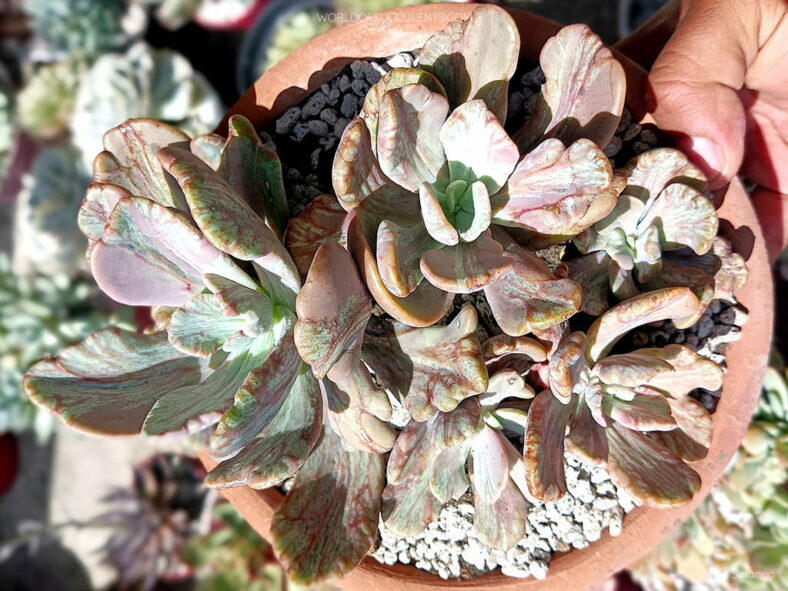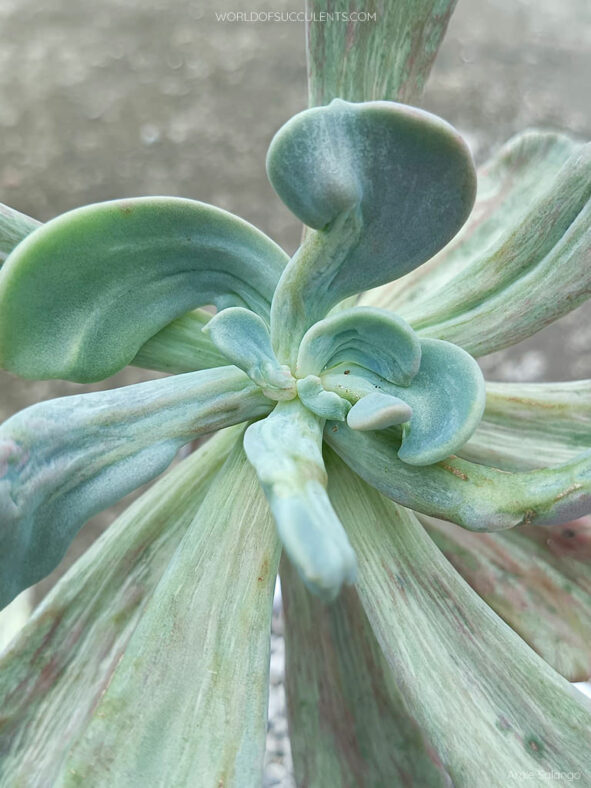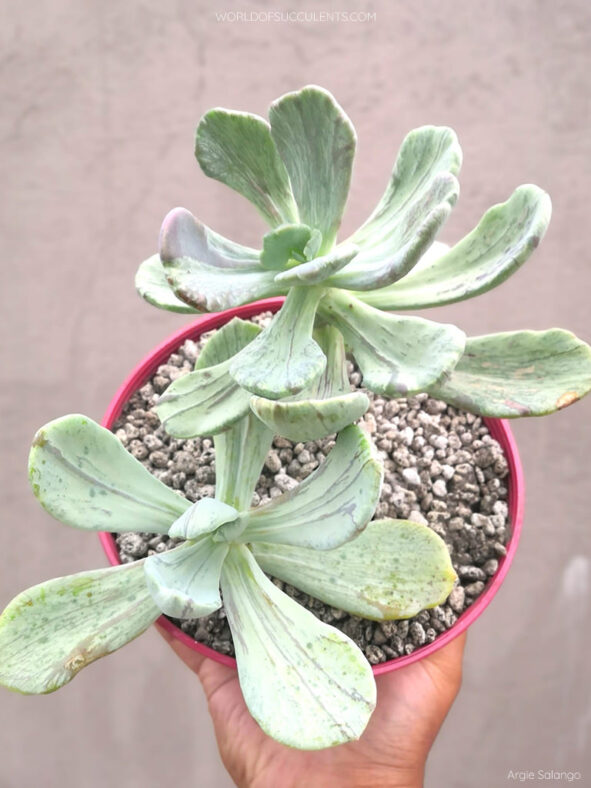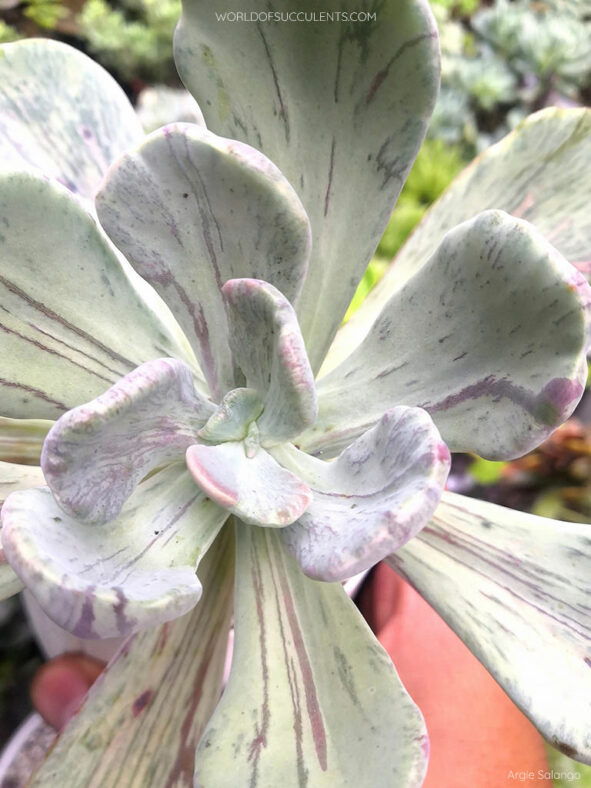Scientific Name
×Pachyveria 'Jocelyn's Joy'
Scientific Classification
Family: Crassulaceae
Subfamily: Sempervivoideae
Tribe: Sedeae
Nothogenus: ×Pachyveria
Origin
×Pachyveria 'Jocelyn's Joy' is a spontaneous mutation of ×Pachyveria 'Myrtilla', named by Jocelyn Ainsworth.
Description
×Pachyveria 'Jocelyn's Joy', also sold as Echeveria 'Jocelyn's Joy', is an imperfect but still beautiful, variegated succulent that forms rosettes of somewhat deformed, pale whitish-green leaves with irregular purple-pink to brown markings. The leaves are thick, fleshy, and covered with a powdery bloom.
The bell-shaped flowers, which are reddish outside and orange inside, appear in clusters on tall branched stalks in summer. The mutation also affects the bracts and sepals.

How to Grow and Care for ×Pachyveria 'Jocelyn's Joy'
Light: ×P. 'Jocelyn's Joy' prefers full sun to partial shade. If you move your plant outside in the spring, do it gradually. The intense afternoon sun can cause sunburn. During the winter, put your ×P. 'Jocelyn's Joy' near the brightest window in your home. It will stretch if it does not have enough sunlight.
Soil: This succulent needs a potting soil mix that drains quickly. Many growers create their own mix, but commercial succulent potting mixes will also work well.
Temperature: This tender succulent must be brought indoors to survive winter. ×P. 'Jocelyn's Joy' can withstand temperatures as low as 30 °F (-1.1 °C). USDA Plant Hardiness Zones 10a to 11b, 30 to 50 °F (-1.1 to 10 °C).
Watering: Provide moderate amounts of water from spring to fall. The "soak and dry" method is the preferred schedule for watering ×P. 'Jocelyn's Joy'. If you have saucers under the pots, empty the water briefly. Water your plant just enough to keep it from shriveling during winter.
Fertilizing: ×P. 'Jocelyn's Joy grows well without fertilizer but will benefit from extra nutrients. In spring, use a slow-release or liquid fertilizer diluted 2 to 4 times more than usual and used less often than recommended.
Repotting: Repot the plant only as needed during spring or early summer when it grows actively. To repot your ×P. 'Jocelyn's Joy', ensure the soil is dry before repotting.
Propagation: This succulent is easy to propagate from leaves or stem cuttings. Spring is the best time to take cuttings.
Learn more at How to Grow and Care for Echeveria.
Toxicity of ×Pachyveria 'Jocelyn's Joy'
×P. 'Jocelyn's Joy' has no toxic effects reported. It is safe around pets and humans, although it is not advisable to eat it.
Links
- Back to nothogenus ×Pachyveria
- Succupedia: Browse succulents by Scientific Name, Common Name, Genus, Family, USDA Hardiness Zone, Origin, or cacti by Genus
Photo Gallery
Click on a photo to see a larger version.


